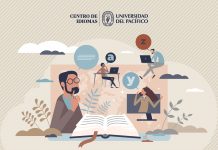When we think of a traditional foreign language lesson, we immediately picture a class with well-behaved students aligned in neat rows, dusty books, a green board, white chalk and a method which nobody would dare to contradict: translation. We might think that, after the arrival of Communicative Language Teaching translation would be gone for good, wouldn’t it? Actually, things are very different and I would like to argue for its use in the language classroom.
Different approaches and methods have told teachers to prevent their students from using the L1, since this may have seriously detrimental effects on their learning process. However, using the L1 and translating are not problems in themselves, but regarding how they are used to aid learning. After all, we all translate, even if only at the beginning of our language learning process!
In order to make the most of translation, we should not think of it as a method like the much-maligned Grammar Translation. Instead, we should try to think of activities in which translation and interlinguistic awareness could be challenging for our learners. Using translation wisely can help students in two ways:
- Language Awareness:
Thanks to a comparison between lexical chunks, learners can become aware of many interesting peculiarities of L1 and L2. For example, the differences between collocations in the two languages (e.g. “depende de” versus “depend on”), false friends (e.g. “actual”) or even the shocking lack of equivalence in idiomatic expressions and popular sayings (e.g. how would you say “ir de Guatemala a Guatepeor” in English?). Although knowledge of these features does not in itself guarantee lexical mastery, at least it prevents some recurrent interference-based mistakes and creates a habit of L2 fact-checking, especially now that most students seem to be so keen on Google Translate instead of a good online dictionary.
- Cultural Awareness:
Two different language systems operate in different ways in their respective contexts. There are assumptions, beliefs, and ways of seeing the world which are not necessarily apparent when we expose students to L2 content. Translation can help students realise that, in the real world, what they consider “normal” in L1 simply does not apply in L2. Think, for instance, of students asking you how to say “de nada” in English as a response to “thank you”. Would you simply throw out “you’re welcome” or the old-fashioned “don’t mention it?” Or would you think twice about when this kind of phrase is used and when not (most of the time)?
If we want to incorporate translation into our teaching, we should consider how our learners will benefit from it. If they require systems work, then translating or comparing L1 and L2 could be beneficial if we detect areas needing special contrastive attention. If they require work on skills, translation can help them go beyond their current capabilities by providing them with language they can use in communicative settings (for example, when preparing questions for an interview). If they require more challenging practice, we can set up lively activities requiring students to identify, produce or give feedback on translations of language chunks in context. For further suggestions, I would recommend the eyebrow-raising work by Guy Cook, “Translation in Language Teaching”.
In conclusion, translation is definitely here to stay. Certainly, teachers can rest assured they do not need to revert to Grammar Translation. Instead, they should not be afraid of using some activities requiring L1 and L2 working together, and perhaps they will discover how useful it can be.
NOW IT’S YOUR TURN
Have you ever used translation in class? If not, What prevents you from using it?
Biodata
Mayra Yaranga (1985) Doctor in Education (UNIFÉ); Master’s Degree in Media, Culture and Identity from Roehampton University (London) revalidated by PUCP, a Bachelor’s Degree in Education – UPCH and the Professional Title of Licenciada – IPNM. Currently she is Cambridge Oral Examiner and Member of the Research Team for Universidad del Pacífico Language Centre. She is also an Associate Professor and Pre-University Centre Director at UNIFÉ.
*Los mensajes y/o comentarios de publicidad u otra índole, no relacionados con el artículo, serán eliminados y reportados como SPAM*











There are two main ideas that I can take from this article, the first one is cultural awareness and the second one is contrastive analysis. Translation can definitely help us understand how languages reflect the thinking of cultures and it can also help us contrast this thinking and language systems with other cultures and languages. Thank you Mayra for sharing these important ideas.
Thank you very much for reading us and sharing your ideas with us. Certainly,the language component is not the only one we should be paying attention to but also the cultural one.
The use of ‘actually’ instead of ‘currently’ is one of the typical mistakes some students make when they introduce themselves and talk about their work.
As you mention, L1 & L2 is vital to be compared in situations like this so students could be aware of false friends and avoid fossilization.
Thanks for sharing this information with us.
Thank you very much for your comments. The example you’ve given is a very relevant one since it’s very common. Just when we are able to pay attention to our students production and not only poiting their mistakes but helping them reflect on language, I strongly believe, we are working towards meaninful learning.
Comments are closed.